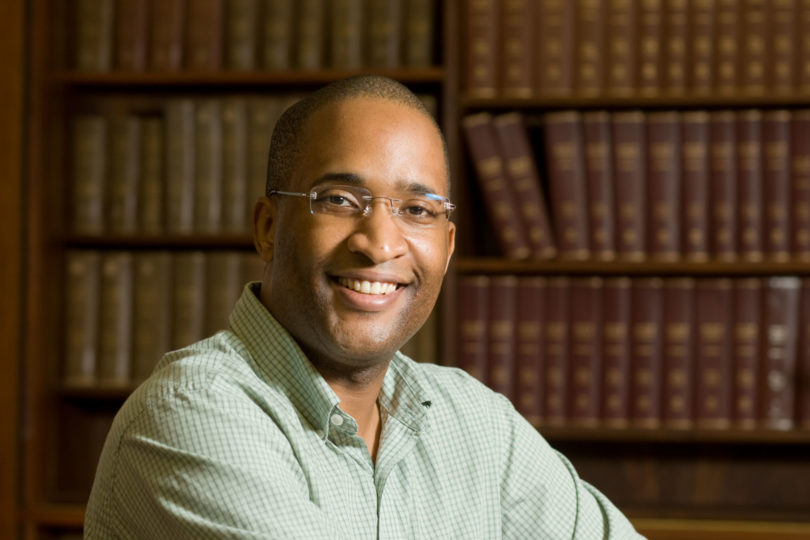If one were asked to describe the research of chemistry assistant professor Marcus Lay one might say, “almost invisible.”
Lay deals with understanding and manipulating systems at the nanometer scale-that’s a billionth of a meter. But while his research world is small, Lay’s enthusiasm for his lab work is large, and the scientific community and his students are taking notice.
The National Science Foundation has noticed too, to the tune of a $564,000 grant funded by the federal government’s stimulus package. But while Lay’s at home talking about Scanning Probe Microscopy and self-assembled monolayers, he’s not much different from the Brooklyn native who fell in love with science as a boy.
“I always loved science in elementary school, at first because I always read a lot of comics, and in comics, chemists were the coolest characters,” he said. “But as I went through high school, I had some extraordinary teachers in chemistry, and that as much as anything helped focus me on my future.”
His mother and father were strong believers in academics, and the three Lay siblings always had to finish their homework before going out to play.
Even though Lay grew up in Brooklyn, he knew the South well, since both his parents grew up in Winder. Though they moved north decades ago, they came down each summer.
When Lay finished high school, he wanted to get away for college, and his mind turned to UGA. He came for his undergraduate years in 1993. Before too long, he was a chemistry major and flourished in a discipline in which major discoveries were being made around the world on an almost-daily basis.
“I wasn’t entirely sure, though, so I took a questionnaire to see what kind of career fit my interests, and the answer came back that I should be a bus driver!” he said. “But the more I was around chemistry, the more I was sure that this was where my future lay.”
After earning his bachelor’s degree, he worked for six months before coming back to a doctoral program, also in chemistry-the first person in his family to attend graduate school.
In chemistry it’s not uncommon for students to go straight from bachelor’s to doctoral programs, and Lay found out, after a couple of rocky semesters, that he was a good teacher. But even more, he discovered an enduring fascination with the vanishingly tiny world of nanoscale systems.
Working at such small scales might seem to be more theoretical than practical, but that couldn’t be further from the truth. In fact, nanoscale electronic devices can be deposited on heat-sensitive surfaces, often at room temperature, and this kind of work has helped lead to flat panel displays, thin-film transistors and many kinds of flexible, lightweight and transparent electrical devices.
In addition to his grant from NSF, Lay has large grants pending at a number of other places, and his lab already has an enviable publishing record. He is also on the Faculty of Engineering at UGA and a member of the Nanoscience and Engineering Center.
In his spare time, he’s something of a chef, and when he gets back to Brooklyn, he still helps around the house.








